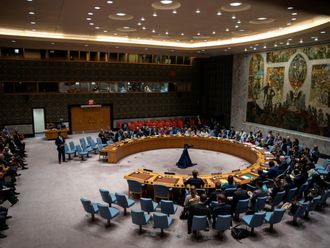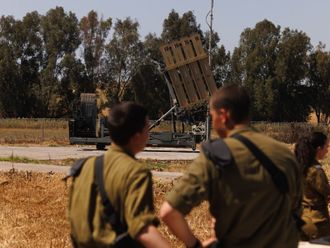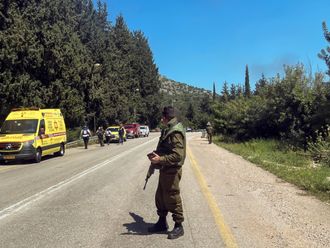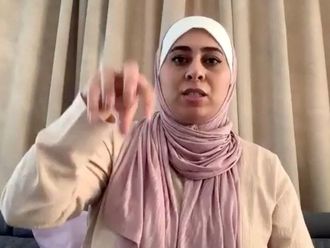
DUBAI: US President Donald Trump’s decision to not to re-certify the Iranian nuclear deal marks yet another key moment in relations between Iran and America, which has seen decades of mistrust and mutual recriminations. Iranian President Hassan Rouhani mentioned many of them in his reaction to Trump’s decision on Friday night.
Here are some of the key moments of that relationship:
1953 coup
In the aftermath of the Second World War, Iran nationalised the British oil refinery at Abadan, at the time one of the world’s largest. America, fearful of Soviet influence, sided with the British in fomenting a coup against the elected government of Iranian Prime Minister Mohammad Mosaddegh. Though initially a failure, street protests fanned by the CIA ultimately pushed Mosaddegh out of power and cemented the rule of Shah Mohammad Reza Pahlavi. The US role in the coup plays a large part in the mistrust of America that persists in Iran to this day.
1979 Islamic revolution
By January 1979, the cancer-stricken shah’s grip on power had waned. Facing protests and strikes, he fled into exile, shocking his American backers who had no idea a revolution was in the making. The long-exiled Ayatollah Ruhollah Khomenei, a charismatic hardline Shiite cleric, returned to Tehran. Soon, he would become Iran’s first supreme leader in its clerically overseen government, having final say on all state matters. Khomenei later would turn against those who supported the revolution but opposed his absolute rule.
The US embassy takeover and hostage crisis
In November 1979, Iranian university students stormed the US embassy in Tehran, taking 52 Americans hostage. They demanded the return of the shah to Iran to face trial. President Jimmy Carter refused and launched a failed commando raid to free the captives. Six Americans who fled the initial takeover and found refuge with the Canadian ambassador later escaped Iran with the CIA’s help. Their escape was dramatised in the 2012 film “Argo.” Iran held the hostages for 444 days, releasing them only after the 1981 inauguration of President Ronald Reagan.
Iran-Contra scandal
Under the Reagan administration, the United States agreed to secretly send weapons to Iran, then under an arms embargo amid its 1980s war with Iraq. Money earned from those sales went to fund American-backed Contra rebels fighting in Nicaragua. The Americans also hoped the sales would encourage the Iranian government to use its sway to help free American hostages held by the Lebanese Shiite militant group Hezbollah. When George H.W. Bush became president, he told Iran that “good will begets good will” and while American hostages in Lebanon were freed, relations never went further.
Naval battle and shooting down of jetliner
Iran and the US fought a one-day naval battle on April 18, 1988, after the near-sinking of the missile frigate USS Samuel B. Roberts by an Iranian mine during the Iran-Iraq war. That day, US forces attacked two Iranian oil rigs and sank or damaged six Iranian vessels. A few months later, in July 1988, the USS Vincennes in the Strait of Hormuz mistook an Iran Air flight heading to Dubai for an attacking fighter jet, shooting down the plane and killing all 290 people on-board.
‘Axis of evil’
Iran helped the US immediately after the September 11, 2001, terror attacks amid the American-led invasion of Afghanistan that toppled the Taliban. However, President George W. Bush would single out Iran in early 2002 along with North Korea and Iraq as belonging to what he described as the “axis of evil,” three countries he said that were actively “seeking weapons of mass destruction.” Iranian assistance immediately ended after that.
Battlefield rivalries
After the US-led invasion of Iraq in 2003, American forces said the expeditionary Quds Force of Iran’s paramilitary Revolutionary Guard trained Iraqi militants to build dangerous roadside bombs. Iran denied it. Iranian forces and Hezbollah later would aid embattled Syrian President Bashar Al Assad in his country’s civil war, despite the US opposing his rule. Iran also has offered support to Al Houthi rebels in Yemen, who have been fighting a US-backed Saudi-led coalition seeking to restore Yemen’s internationally recognised government to power. But in present-day Iraq, Iranian-advised Shiite militias are among the strongest on the ground in the battle against Daesh.
Ahmadinejad’s ascent
Hardliner Mahmoud Ahmadinejad became Iran’s president in 2005. Western fears about Iran’s nuclear programme spiked under his government. The Stuxnet computer virus, suspected to be made by the US and Israel, destroyed Iranian centrifuges. New economic sanctions squeezed Iran’s economy. In 2009, his contested re-election as president sparked the biggest demonstrations Iran has seen since the 1979 revolution. Authorities brutally put down the protests. The US, while criticising the violence, avoided directly intervening in the turmoil.
2015 nuclear deal
Secret talks in Oman with the US under the administration of President Barack Obama led to Iran sitting down to negotiate over its nuclear programme with world powers. In 2015, it agreed to an accord that saw it limit its enrichment of uranium in exchange for the lifting of economic sanctions. Western powers struck the deal in order to deny Iran the ability to quickly develop nuclear weapons. Iran insists it has never sought nuclear arms. The deal saw Iran make billions of dollars in deals for aeroplanes and start widely selling its oil, though the average Iranians say they still haven’t seen the benefits of the agreement.











